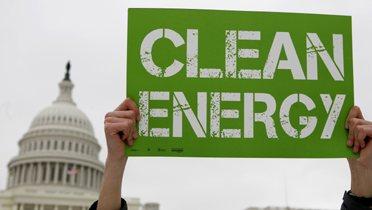We commend the National Commission on Fiscal Responsibility and Reform (the Commission) for its interest in examining all feasible policy tools to address the fiscal gap. We argue in this submission that a policy that puts a price on greenhouse gas emissions can provide an efficient and significant revenue source for deficit reduction. We argue that a price on carbon can be both good fiscal and good environmental policy and that the Commission should not discount its political feasibility given the alternatives. Indeed, a carbon price can simultaneously: (1) address an environmental externality, 2) forestall more costly and less environmentally effective policies in existing law, and 3) raise significant revenue for deficit reduction.
Congress could establish either a cap-and-trade program that auctions allowances and includes a price collar, or it can establish an excise tax on the carbon content of fossil fuels. Either policy could raise over $80 billion annually for deficit reduction over the next few decades and discourage harmful emissions. The two approaches share many economic advantages, and both rely on sending market signals to raise the price of emitting carbon dioxide and other greenhouse gases.
The cap-and-trade system we have in mind here would be importantly different in at least two key ways from the approaches passed by the House of Representatives in H.R. 2454 and proposed in the Senate. First, we would capture for the benefit of taxpayers the economic rents created by restricting the rights to emit greenhouse pollution. In contrast, the House bill calls for about 60 percent of the total allowances to be given away for free over the life of the program. The government would auction the remaining 40 percent, but it would not use the auction revenue for tax or deficit reduction. Of the total allowance value in 2016, the bill targets only 0.2 percent for deficit reduction. The bulk of the value goes to such things as subsidizing electric utilities, helping trade-exposed industries, and transfers to low-income consumers. Moreover, the bill passes a large share of the value of emission allowances along to households in a way that blunts their incentives to conserve energy, thus increasing the carbon price necessary to achieve the environmental goals of the program by up to 15 percent.[1]
The bill proposed by Senators Kerry and Boxer gives away 77 percent of the allowances for free in 2012. Of the remaining 23 percent, only 43 percent is targeted for deficit reduction. The bill proposed by Senators Cantwell and Collins auctions all of the allowances, but then allocates 75 percent of the revenue evenly across all U.S. residents and allocates 25 percent to fund such things as transition assistance, carbon sequestering projects, and clean energy investments. The bill allocates nothing for deficit reduction.
Another key feature of our favored cap-and-trade approach would, by enforcing reasonable limits on allowance prices through a price collar, prevent the program from imposing an inadvertently low or high price on carbon, thus helping it sustain ambitious but economically feasible emission reductions through myriad macroeconomic fluctuations.
The price of any carbon-intensive activity should include the environmental cost imposed by the activity. Thus the economic purpose of a carbon tax or cap-and-trade is to discourage emissions, not necessarily to raise revenue. This makes it distinctly different from other taxes; for example, the government doesn’t tax income because it wants to discourage income. Thus, the potential to raise revenue that can help address massive fiscal deficits is really a potential ancillary benefit of the climate policy. Were the budget in balance or surplus, climate policy revenues could be used to fund reductions in more distortionary taxes.
The economic literature is clear that using climate policy revenues to reduce distortions in the tax system, including distortions caused by the need to fund large deficits, can greatly reduce the overall costs of the program — by some estimates by as much as 75 percent[2]. One main reason for the cost-lowering potential of wise “revenue recycling” derives from how climate policy raises the prices of such things as electricity and transportation. These real price increases amount to a reduction in real incomes, which in turn magnifies the economic inefficiencies in our overall tax system[3]. These inefficiencies – known as the tax-interaction effect – can substantially increase the overall cost of any environmental regulation, even in some cases leading to negative net benefits[4]. Thus, as you consider raising other taxes it becomes all the more important to use climate policy revenues to offset the tax interaction effect.
How much deficit reduction could we accomplish through a well-designed climate policy? According to the EPA’s analysis of the caps in the existing bills, it could raise about $60 to $80 billion annually in the early years, rising to about $100 billion per year in about 25 years, and then dropping in later years when the decline in emissions caps dominates the increase in their price. Over the ten-year window, this makes potential carbon revenue on par with our expected revenue from existing excise taxes, which amounts to about a half of percent of GDP. Across the range of studies of H.R. 2454 and other cap-and-trade proposals, EPA’s estimates of likely carbon prices, and thus the potential revenue from auctioning them, tend towards the low end[5]. A recent Brookings study estimates that under certain assumptions a tax on carbon in the U.S. energy sector that starts at $30 per ton of carbon dioxide now and rises by 5% (inflation adjusted) each year could raise between $140 billion and $250 billion per year through 2040.[6]
Many argue that putting a price on carbon and other greenhouse gases would be politically infeasible. It seems that every serious idea for reducing the substantial debt burden is deemed politically infeasible by someone. The list of infeasible measures includes nearly all the arrows in your quiver: imposing a consumption tax; raising the eligibility age for Social Security and Medicare; means testing entitlements; and reducing major tax expenditures such as the mortgage interest deduction.
We think labeling sensible policies to put a price on carbon or to address the looming fiscal crisis as “politically infeasible” is meaningless without a discussion of what happens in absence of these so-called infeasible measures. Without Congressional action, the default is not the absence of burdensome climate policy. Rather, the default is that the Environmental Protection Agency will issue command-and-control emission rules under the Clean Air Act. For existing air pollution regulations, command-and-control mandates result in up to 22 times the cost relative to a market-based approach[7]. Command-and-control regulations, such as technology standards, might be preferable to market-based regulations when measuring emissions is costly or infeasible. This is not the case with most greenhouse emissions. A modest, gradually increasing, and predictable price on carbon would be substantially less burdensome than an approach relying on Clean Air Act authorities.[8]
Failing to pursue sensible measures to reduce our debt burden will harm the long-run prospects of the economy. Even under the Congressional Budget Offices’s very conservative – and unrealistic – current law scenario, the debt-to-GDP ratio increases to about 80 percent in 2035 and over 100 percent in 2080. CBO’s more realistic alternative scenario shows the debt-to-GDP ratio exploding to 185 percent in 2035 and over 850 percent in 2080. Approaching these debt levels will result in profound and unsustainable impacts on the U.S. macroeconomy. In this context, let us not be daunted by those who, by declaring climate and tax proposals politically infeasible, imply that the current trajectory is feasible.
Conclusion
A policy that puts a well-designed price on greenhouse gas emissions can provide an efficient and significant revenue source. A price on carbon is both good fiscal and environmental policy and the Commission should not discount its political feasibility given the alternatives, including the imminent prospect of regulation of greenhouse gases by the EPA under the ill-suited and more costly Clean Air Act authorities. In one measure you can: (1) raise on the order of $100 billion per year over several decades for deficit reduction; (2) address a serious environmental externality; and (3) forestall more costly and less environmentally effective policies in existing law.
Footnotes
[1] Palmer, Karen, “Costs and Benefits for Consumers and Energy Price Effects Associated with the Allocation of Greenhouse Gas Emissions Allowances,” Testimony before the U.S. Senate Committee on Energy and Natural Resources, Washington, DC, October 21, 2009. Downloaded from: http://cantwell.senate.gov/issues/Karen%20Palmer.pdf.
[2]For a review of the issue see Adele Morris, “Equity and Efficiency in Cap-and-Trade: Effectively Managing the Emissions Allowance Supply,” Brookings Institution Policy Brief 09-05, October 2009. Available at https://www.brookings.edu/papers/2009/10_cap_and_trade_emissions_allowance_morris.aspx . Cost estimates appear in Parry, I. “Reducing Carbon Emissions: Interactions with the Tax System Raise the Cost,” Resources. Washington, D.C.: Resources for the Future, 1997.
[3]See, for example, Agnar Sandmo (1975), “Optimal Taxation in the Presence of Externalities,” Swedish Journal of Economics 77(1).
[4]See Lawrence H. Goulder (1998), “Environmental Policy Making in a Second-best Setting,” Journal of Applied Economics 1(2): 279-328.
[5]For example, see Figure 12, page 41, in Parker, Larry and Brent Yacobucci, “Climate Change: Costs and Benefits of the Cap-and-Trade Provisions of H.R. 2454,” Congressional Research Service Report R40809, September 14, 2009.
[6]“Taxing Carbon and Subsidizing Energy Efficient Household Capital,” with W. McKibbin and P. Wilcoxen, Climate and Energy Economics Project Discussion Paper, The Brookings Institution, draft August 11, 2010.
[7]See Economic Report of the President, 2003, Washington, DC: US Government Printing Office, 2003.
[8]See, for example, Ted Gayer and John K. Horowitz (2005), “Market-based Approaches to Environmental Regulations,” Foundations and Trends in Microeconomics 1(4).





